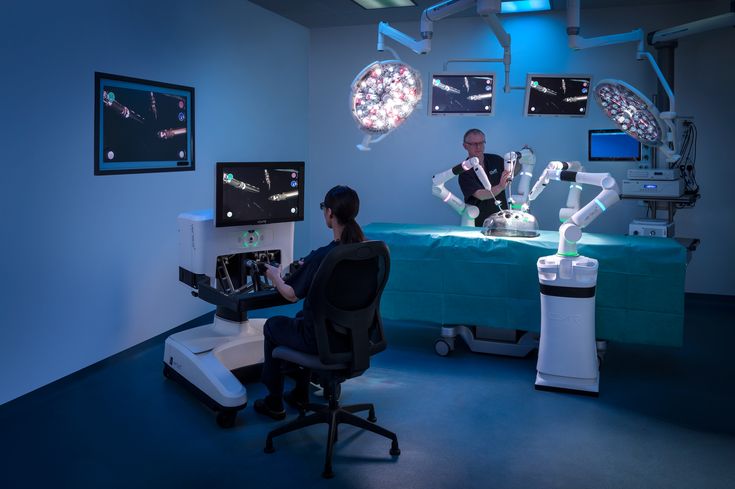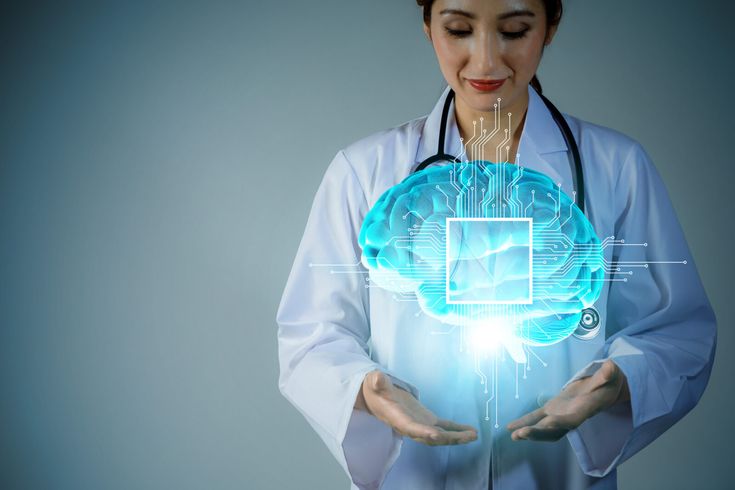Advancements in robotic surgery and neurological innovations are transforming global healthcare, offering precision, efficiency, and improved patient outcomes. As technology continues to evolve, the integration of robotics and AI-driven neurological treatments is paving the way for a new era in medical science. These innovations are addressing complex medical challenges, enhancing surgical precision, and revolutionizing treatment strategies for neurological disorders.

The Rise of Robotic Surgery
Robotic surgery has revolutionized medical procedures, providing unparalleled precision and minimizing invasiveness. Systems like the da Vinci Surgical System allow surgeons to perform complex procedures with enhanced dexterity, reducing recovery times and postoperative complications. Additionally, robotic systems like the ROSA Brain and Mako Robotic-Arm Assisted Surgery are making significant contributions in neurosurgery and orthopedic procedures, respectively.
Benefits of Robotic Surgery
- Increased precision and accuracy: Robotic systems minimize human error and enhance surgical precision.
- Reduced risk of human error: Automated controls and AI-powered decision-making improve procedural outcomes.
- Shorter hospital stays and faster recovery: Minimally invasive techniques lead to quicker rehabilitation.
- Less postoperative pain and scarring: Smaller incisions reduce tissue damage and scarring.
- Remote surgery capabilities: With advancements in 5G technology, robotic-assisted remote surgeries are becoming feasible, allowing expert surgeons to perform operations across the globe.
- Integration with augmented reality (AR) and virtual reality (VR): Surgeons can now visualize procedures with greater clarity using AR and VR, improving training and real-time decision-making.
- Automated surgical assistance: AI-powered robotic assistants can monitor vital signs, adjust surgical tools in real-time, and provide enhanced support during procedures.
From minimally invasive heart surgeries to orthopedic and gynecological procedures, robotic-assisted surgery has become a game-changer in modern medicine. The integration of AI and machine learning in robotic platforms is further refining surgical accuracy and patient-specific treatment planning.

Neurological Innovations Reshaping Healthcare
Neurological disorders, including Parkinson’s disease, epilepsy, and stroke, have long been challenging to treat effectively. However, innovations in neurotechnology are significantly improving patient outcomes. Key advancements include:
Brain-Computer Interfaces (BCIs)
BCIs are transforming the lives of individuals with severe motor impairments by enabling communication and mobility through neural signaling. Patients with conditions such as ALS or spinal cord injuries can now interact with computers and prosthetic limbs using thought-controlled interfaces. Emerging advancements include wireless BCIs, reducing the need for invasive procedures and increasing accessibility for patients.
Deep Brain Stimulation (DBS)
DBS is a revolutionary treatment for Parkinson’s disease, essential tremors, and other movement disorders. By delivering electrical impulses to specific brain areas, DBS enhances motor functions, alleviates symptoms, and improves the overall quality of life for patients. New advancements in adaptive DBS technology are making treatments even more responsive to individual patient needs by using AI to adjust stimulation levels in real-time.
AI-Driven Diagnostics
Machine learning models and AI-powered imaging tools are revolutionizing the early detection of neurodegenerative diseases such as Alzheimer’s and multiple sclerosis. AI-driven algorithms analyze brain scans and patient data with remarkable accuracy, allowing for timely interventions and personalized treatment plans. AI is also improving EEG and MRI analysis, providing deeper insights into brain activity and disease progression.
Regenerative Medicine and Neural Implants
Stem cell therapies and neural implants are showing promising results in repairing damaged brain tissue and restoring lost functions. Researchers are developing bioengineered neural tissue to replace damaged brain cells, potentially reversing conditions like stroke-induced paralysis and traumatic brain injuries. Cutting-edge developments in optogenetics and gene therapy are also paving the way for targeted neurological treatments with fewer side effects.
Global Impact and Accessibility
While these advancements promise a brighter future for healthcare, their global implementation remains a challenge. Limited access to high-tech medical facilities, high costs, and a lack of skilled professionals in developing nations hinder widespread adoption. However, several initiatives are working to bridge the gap:
- Telemedicine and remote diagnostics: AI-powered tools and remote consultations enable patients in remote areas to receive expert medical advice and early diagnoses.
- Mobile surgical units: Portable robotic-assisted surgical platforms are expanding access to advanced healthcare in rural and underserved regions.
- Affordable AI-driven healthcare solutions: Emerging startups and tech giants are developing cost-effective medical AI solutions to ensure equitable access to cutting-edge treatments.
- Medical education and training programs: Training healthcare professionals in robotic and neurotechnology advancements ensures a skilled workforce ready to implement these innovations globally.
- International collaborations and funding: Governments, NGOs, and private organizations are working together to provide financial support and infrastructure to bring these technologies to low-income regions.
- Ethical AI and robotics policies: Establishing regulatory frameworks ensures the responsible deployment of AI-driven healthcare technologies, maintaining patient safety and ethical considerations.

The Future of Medical Technology
The fusion of robotics and neurology in medicine is just the beginning. Future developments may include:
- Fully autonomous surgical robots: AI-powered robotic surgeons with enhanced decision-making capabilities may perform complex procedures with minimal human intervention.
- Advanced neural implants for cognitive function restoration: Innovations in brain-computer interfacing could lead to improved memory restoration in Alzheimer’s patients and enhanced cognitive functions in individuals with neurological impairments.
- AI-driven personalized treatment plans: Leveraging big data and predictive analytics, AI will refine medical treatments, tailoring therapies to each patient’s genetic and physiological profile.
- Integration of nanotechnology: The development of nanoscale robots for targeted drug delivery and precision neurosurgery could redefine treatments for conditions like brain tumors and epilepsy.
- Hybrid human-robot collaboration in surgery: Instead of fully autonomous robotic systems, future surgical robots may work alongside human surgeons, combining machine precision with human expertise for optimal patient outcomes.
- Neural regeneration breakthroughs: Advances in biotechnology may allow for neural regeneration, repairing damaged spinal cords and reversing degenerative brain conditions.
- Wearable neurotechnology: Brain-monitoring wearables could become standard tools for tracking neurological health, detecting early signs of disorders, and optimizing cognitive functions.
As technology advances, collaboration between medical institutions, governments, and tech companies will be essential to ensuring equitable access to these life-saving innovations. Regulations and ethical considerations will play a crucial role in shaping the responsible deployment of AI and robotics in healthcare.
Robotic surgery and neurological innovations are redefining global healthcare, offering solutions to some of the most complex medical challenges. With continuous research, technological refinement, and strategic implementation, these cutting-edge advancements have the potential to create a future where high-quality healthcare is accessible to all. By overcoming barriers to accessibility and affordability, the medical landscape will continue to evolve, improving lives and transforming the way we diagnose, treat, and manage diseases worldwide. Continued investment in research, education, and infrastructure will be key to unlocking the full potential of these groundbreaking medical technologies.
Related Blogs : https://ciovisionaries.com/articles-press-release/

